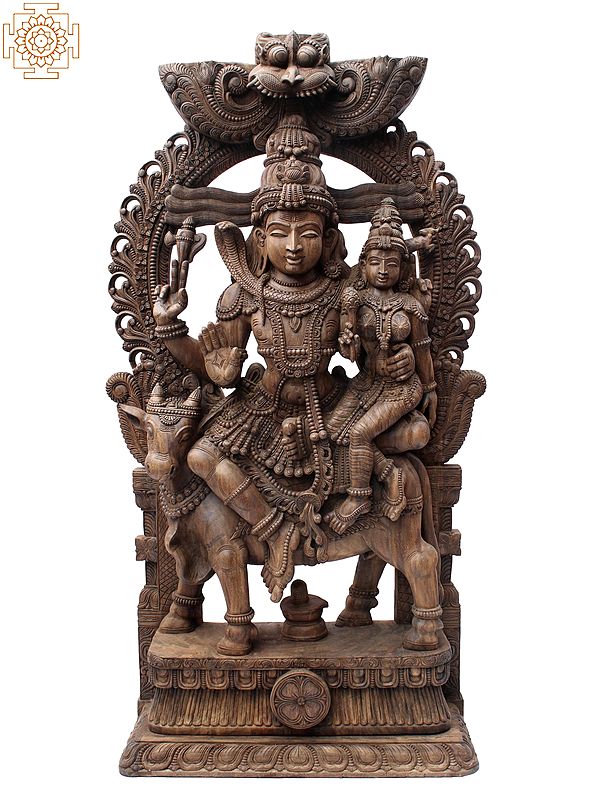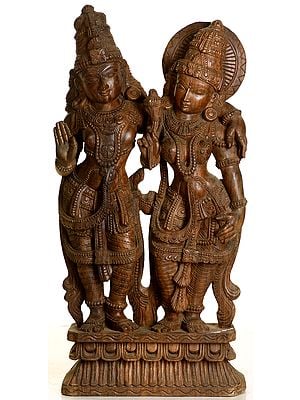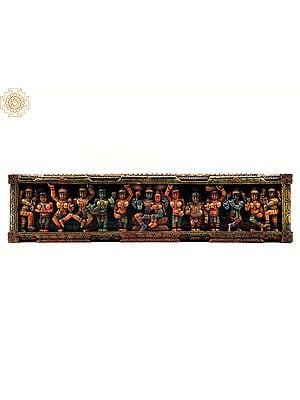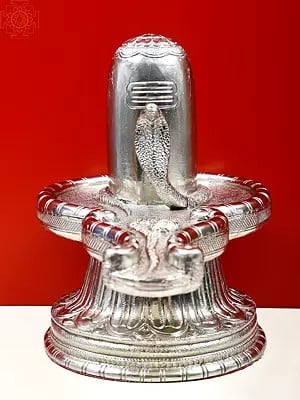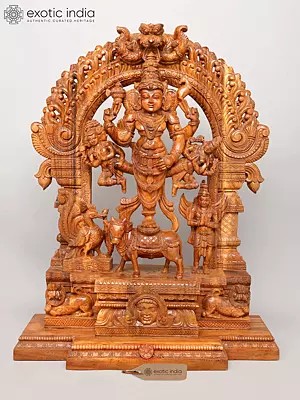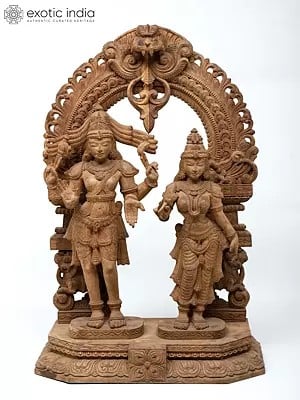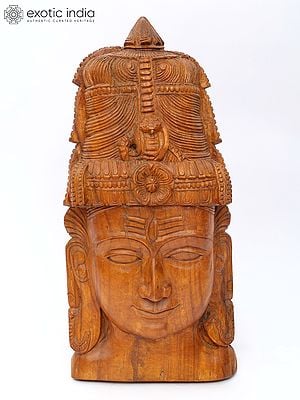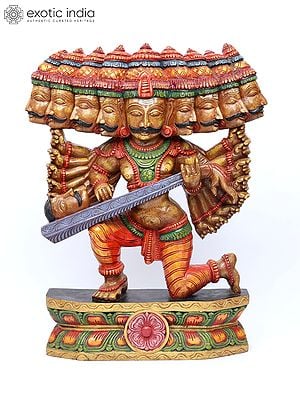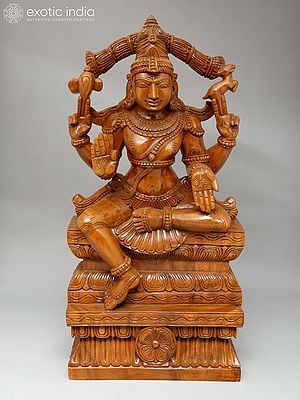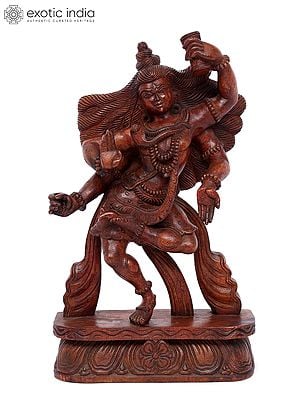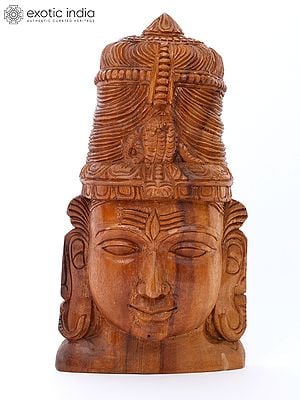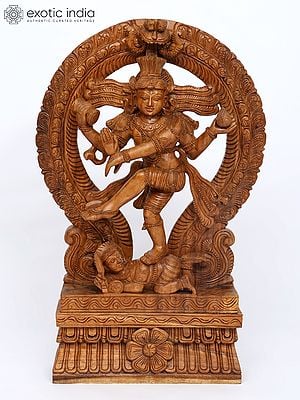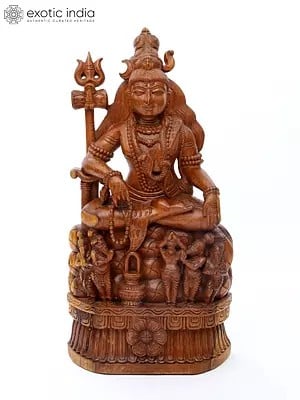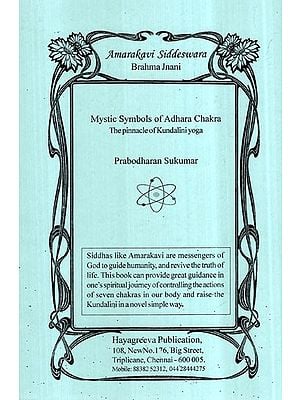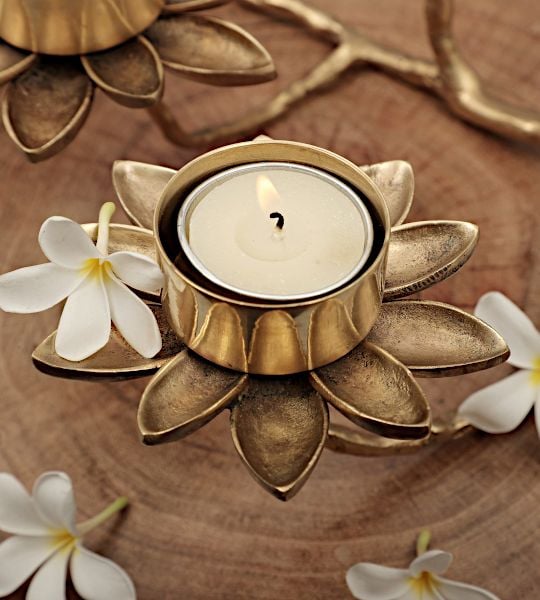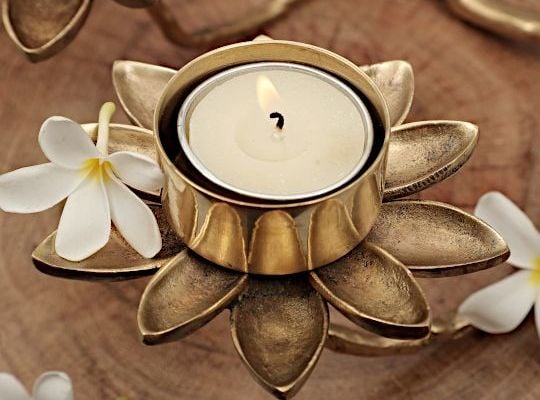81" "Uma-Maheshwara" Large Wooden Shiva Parvati Seated on Nandi with Kirtimukha Arch
| Specifications |
| MIV483 | |
| Wooden Statue | |
| Height: 206 cm | |
| Width: 124.5 cm | |
| Depth: 38.5 cm | |
| Weight 203 kg | |
| Statutory Information |
| Delivery and Return Policies |
| at 43215 | |
| Returns and Exchanges accepted within 7 days | |
| Free Delivery | |
| Delivery from: India |
A
powerful union of Shiva-Shakti, the primordial male and female energies in
Hindu tradition, this spellbinding wooden Uma-Maheshwara murti is inspired by a
long tradition of Hindu temple art. The divine couple whose unity is behind the
conception and sustenance of Srishti (creation) are worshipped by their
devotees as the Universal mother-father duo, the presence of whose combined
forms in the home or place of worship fills it with the life-affirming powers
that pervade the entirety of this universe. A handpicked masterpiece from the
workshop of trained woodworkers of India, this wooden statue of Uma-Maheshwara is every
bit as exquisite and godly as its predecessors who adorn the temple walls of
South India.
Carved with fine incised lines, a rectangular lotus platform is a base for this wooden Uma-Maheshwara murti. Sturdy pillars sprouting from the sides of the pedestal support the splendid aureole which is engraved with miniature floral motifs and vines- symbols of fertility and the origin of life. A recurring motif in Hindu art, the Kirtimukha (face of glory) with large eyes and sharp fangs sits at the top of the floral aura as the symbol of Shiva and Parvati’s combined supreme prowess. Lotus vines spring from his gaping mouth, neutralizing his vicious expressions with the touch of fragrant elements.
Umapati (the Lord of Uma-Parvati) has is long tresses that flow dynamically in three rows on his sides and the rest is tied in a towering Jatamukut (crown made from matted hair) embellished with delicate strings of gems and a multitude of jeweled chains that end just above Shiva’s forehead, which bears the Tripunda (Shaivite mark) with his third eye in the middle. The facial features of Shiva and Parvati carry a meditative calmness, expressed in their half-closed eyes, fine noses, and lips. Multitudes of ornaments cling to their divine physiques, each one of which is carved with intricate details suitable for the universal mother and father. Shiva in his secondary hands holds the ax and the Pashu (symbol of the human soul), his primary right hand is in the gesture of fearlessness and his right-hand embraces Uma- the supreme mother, in a loving embrace. Mirroring the celestial form of her husband, Maa Uma Parvati has her hair in a Jatamukuta, a Tripunda on her forehead, and wears a fine dhoti. She holds a flower in her right hand, which in Hindu culture is the symbol of purity, fertility, and the beginning of life. The most potent and revered form of the coming together of Shiva and Shakti, the aniconic form of Shiva as a pillar of supreme fire (Linga) and Uma Devi as the altar from which it originates (Vedi), the Shiva Linga placed on the base of this wooden Shiva Parvati statue supplements the powers of this roopa.
The act of Lord Shiva placing goddess Uma in his lap (ankarohana), where Devi is Shiva’s left half or on his left (Vaamangi) are the evocations in Hindu art and devotional poetry of the benevolence of Shiva and Shakti for the sustenance of life. Shiva’s innate yogic powers are activated when he is unified with his female energy in the form of Uma leading to the emergence of auspiciousness and wisdom (as Ganesha) and strength and protection (as Kumara Karttikeya). In the presence of this transcendental union, everything becomes the essence of Shiva-Shakti, their mirror image. Srishti (creation) rejoices at this propitious union, its delighted devotion expressed in the robust icon of Nandi- the joyous one.
Sculpting Serenity: Unveiling the Art of Crafting Wood Statues
1. Selecting the right wood
The process of wood carving begins with selecting a chunk of wood that is required according to the type and shape of the statue to be created by the sculptor. Both hardwoods and softwoods are used for making artistic pieces, however, hardwoods are preferred more than softer woods because of their durability and longevity. But if heavy detailing is to be done on the statue, wood with fine grain would be needed as it would be difficult to work with hardwood.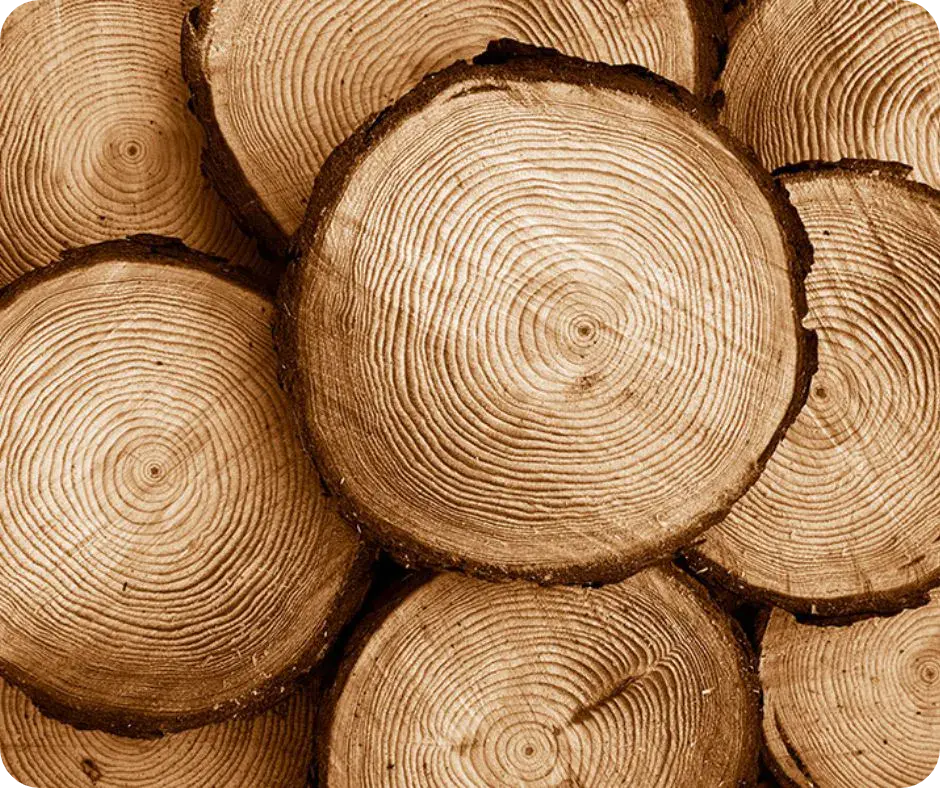
2. Shaping the wood
Once the wood type is selected, the wood carver begins the general shaping process using gouges of various sizes. A gouge is a tool having a curved cutting edge which is useful in removing large unwanted portions of wood easily without splitting the wood. The sculptor always carves the wood across the grain of the wood and not against it.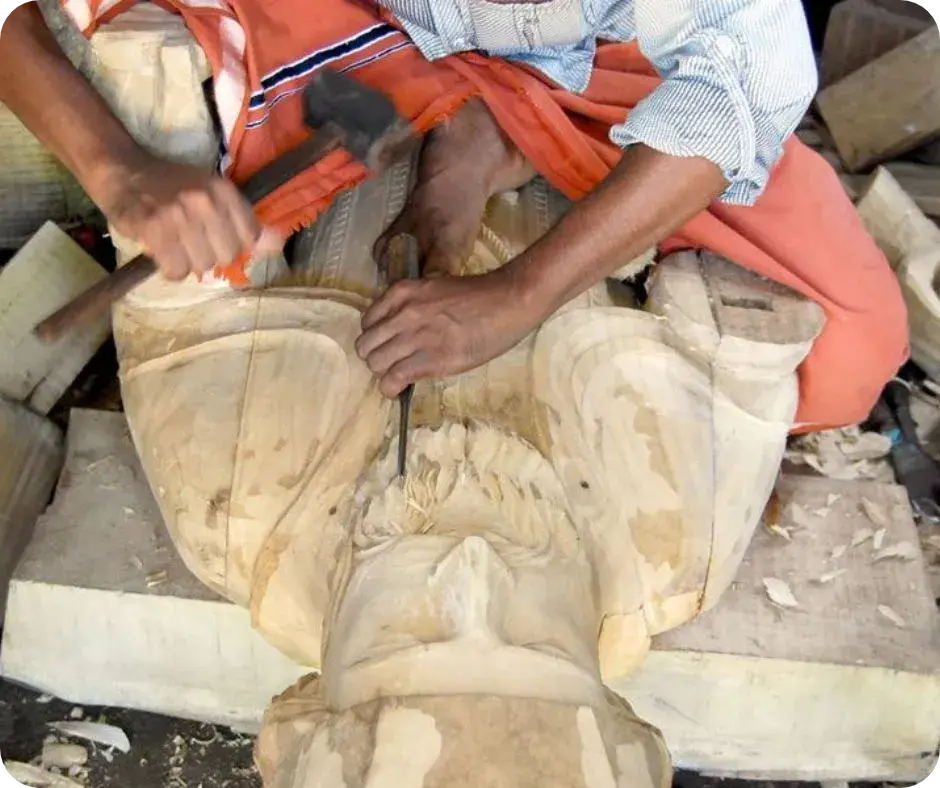
3. Adding detailing
When a refined shape of the statue is obtained, it is time for making details on the statue using different tools. This is achieved by using tools such as a veiner to make and a V-tool to create decorative and sharp cuts.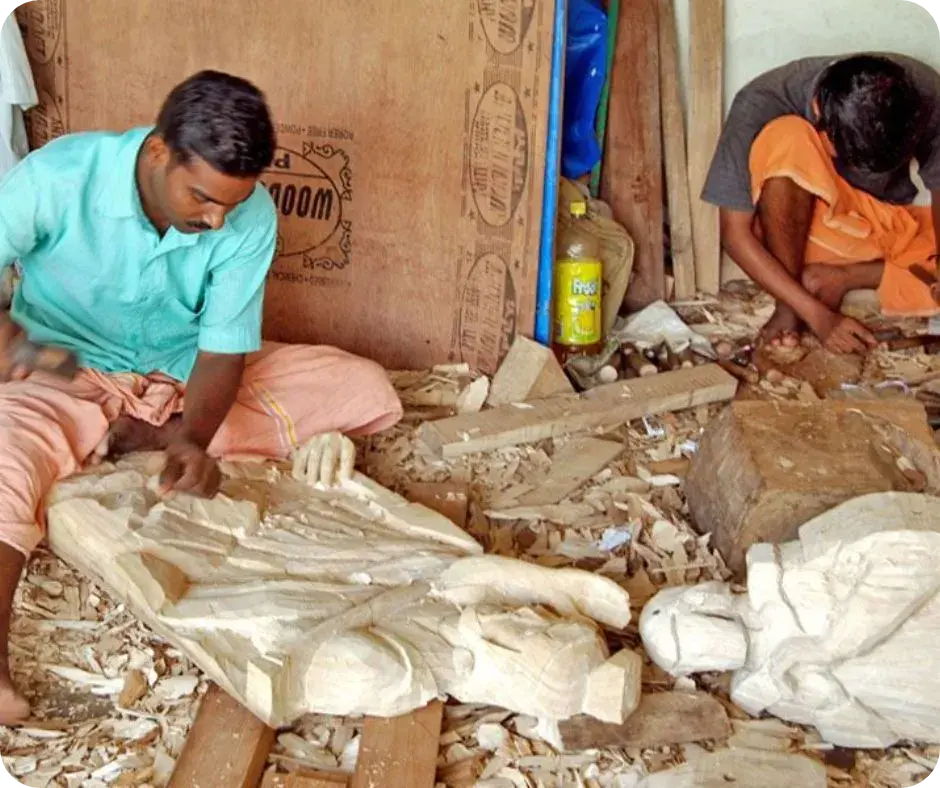
4. Surface finishing
Once finer details have been added, the sculptor is ready to smoothen the surface and give it a perfect finish. Tools such as rasps and rifflers are used to get a smooth surface. The finer polishing is obtained by rubbing the surface with sandpaper. If a textured surface is required, this step is skipped. Finally, to protect the statue from excessive dirt accumulation, the sculptor applies natural oils such as walnut or linseed oil all over it. This also brings a natural sheen to the statue.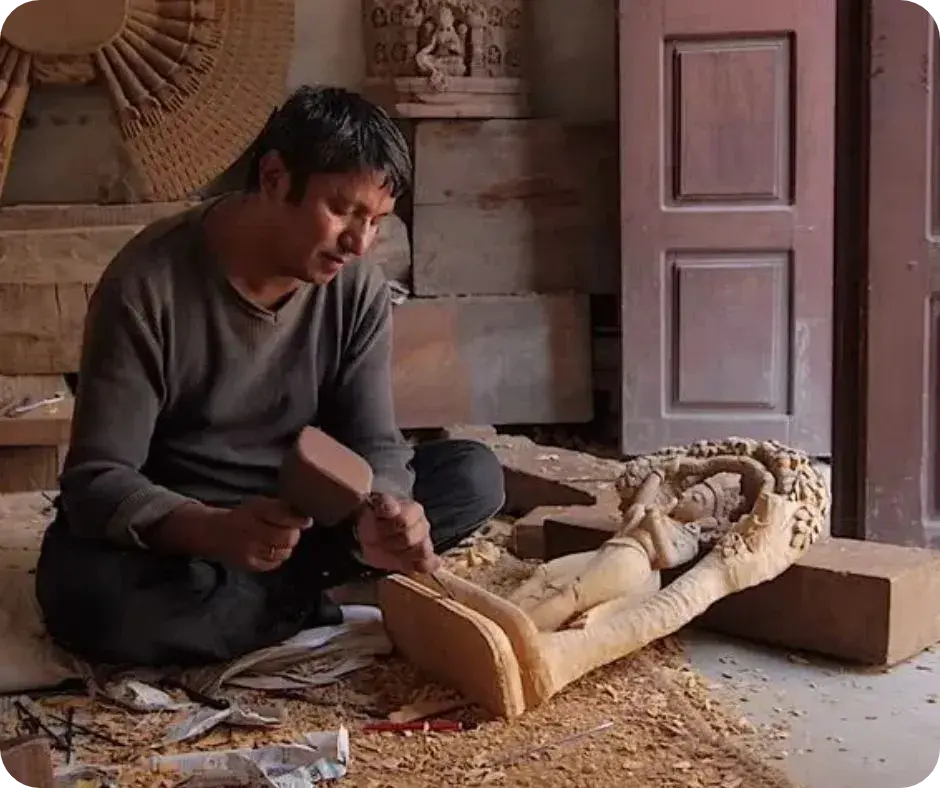
How to care for Wood Statues?
Wood is extensively used in sculpting especially in countries like China, Germany, and Japan. One feature that makes the wood extremely suitable for making statues and sculptures is that it is light and can take very fine detail. It is easier for artists to work with wood than with other materials such as metal or stone. Both hardwoods, as well as softwood, are used for making sculptures. Wood is mainly used for indoor sculptures because it is not as durable as stone. Changes in weather cause wooden sculptures to split or be attacked by insects or fungus. The principal woods for making sculptures and statues are cedar, pine, walnut, oak, and mahogany. The most common technique that sculptors use to make sculptures out of wood is carving with a chisel and a mallet. Since wooden statues are prone to damage, fire, and rot, they require proper care and maintenance.
- Wood tends to expand and contract even after it has been processed, thus it is always recommended to keep the wooden sculptures in rooms with little humidity. Excess moisture can harm your masterpiece.
- Periodical dusting of the finished piece is necessary to maintain its beauty as dust accumulation on the surface takes away the shine of the sculpture. You can use a clean and soft cloth or a hairbrush for this purpose.
- You must avoid applying any chemical-based solutions that may damage the wood from the inside. Instead, you can apply lemon oil or coconut oil using a cotton rag to the sculpture to bring out its natural shine. Lemon oil also helps to clean any stains on the sculpture.
- Applying a layer of beeswax protects the wood from sun damage and hides even the smallest imperfections on the wood.
It is extremely important to preserve and protect wooden sculptures with proper care. A little carelessness and negligence can lead to their decay, resulting in losing all their beauty and strength. Therefore, a regular clean-up of the sculptures is a must to prolong their age and to maintain their shine and luster.














